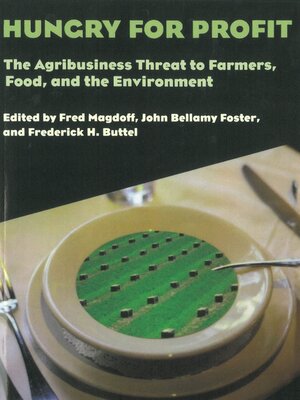Hungry for Profit
ebook ∣ The Agribusiness Threat to Farmers, Food, and the Environment
By Fred Magdoff

Sign up to save your library
With an OverDrive account, you can save your favorite libraries for at-a-glance information about availability. Find out more about OverDrive accounts.
Find this title in Libby, the library reading app by OverDrive.



Search for a digital library with this title
Title found at these libraries:
| Library Name | Distance |
|---|---|
| Loading... |
The agribusiness/food sector is the second most profitable industry in the United States — following pharmaceuticals — with annual sales over $400 billion. Contributing to its profitability are the breathtaking strides in biotechnology coupled with the growing concentration of ownership and control by food's largest corporations. Everything, from decisions on which foods are produced, to how they are processed, distributed, and marketed is, remarkably, dictated by a select few giants wielding enormous power. More and more farmers are forced to adopt new technologies and strategies with consequences potentially harmful to the environment, our health, and the quality of our lives. The role played by trade institutions like the World Trade Organization, serves only to make matters worse.
Through it all, the paradox of capitalist agriculture persists: ever-greater numbers remain hungry and malnourished despite an increase in world food supplies and the perpetuation of food overproduction.
Hungry for Profit presents a historical analysis and an incisive overview of the issues and debates surrounding the global commodification of agriculture. Contributors address the growing public concern over food safety and controversial developments in agricultural biotechnology including genetically engineered foods. Hungry for Profit also examines the extent to which our environmental, social, and economic problems are intertwined with the structure of global agriculture as it now exists.
Hungry for Profit demystifies the reasons why hunger proliferates in the midst of plenty and points the way toward sustainable solutions. Perhaps most important, it highlights the ways in which farmers, farmworkers, environmental and sustainable agriculture groups — as well as consumers — are engaged in the struggle to create a just and environmentally sound food system which, its editors argue, cannot be separated from a just and environmentally sound society.







